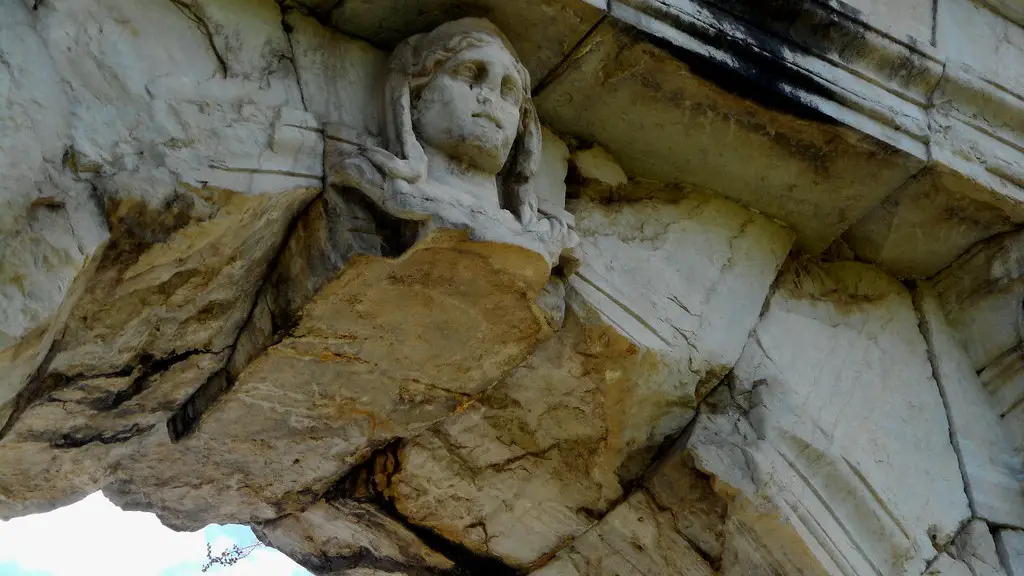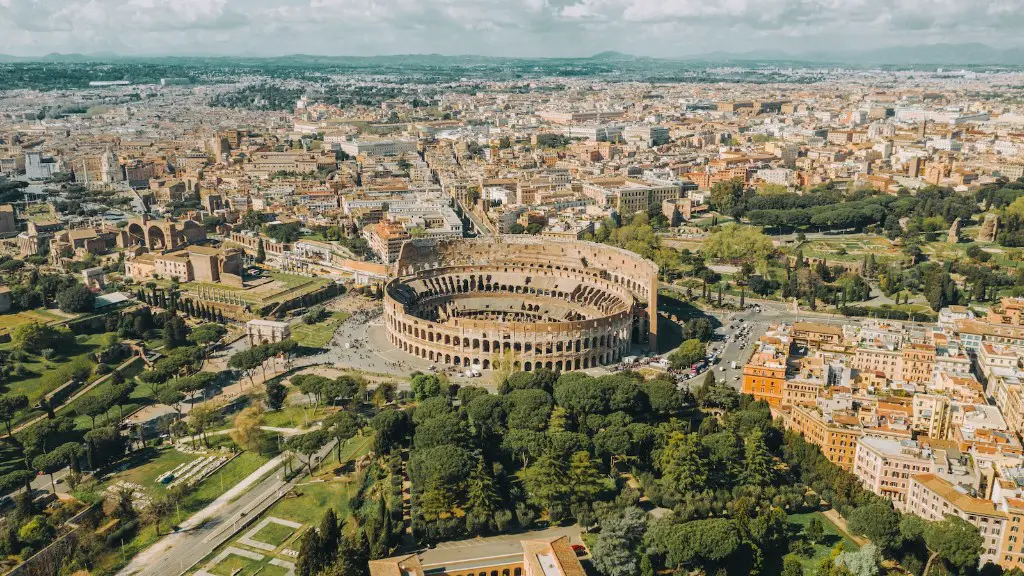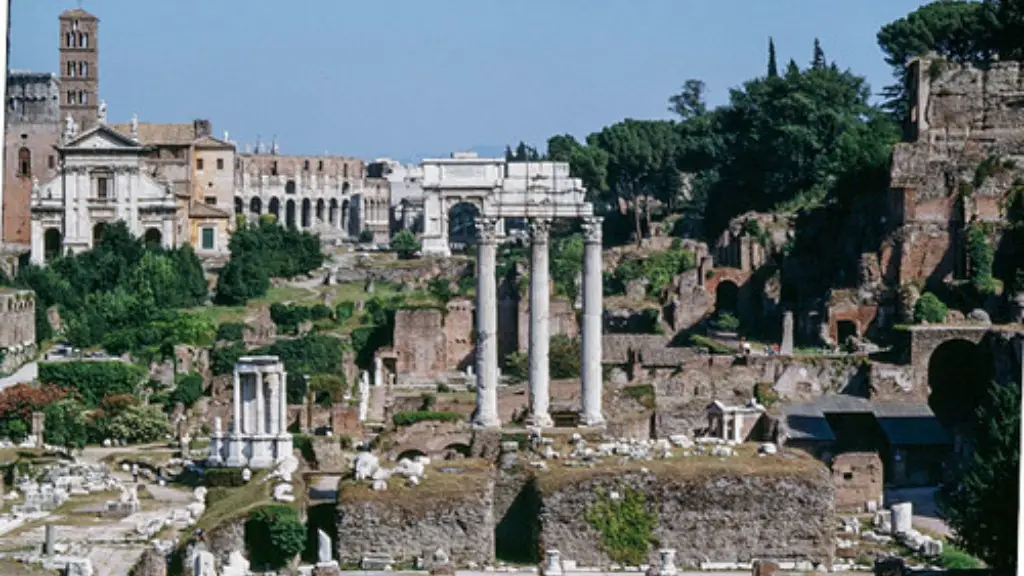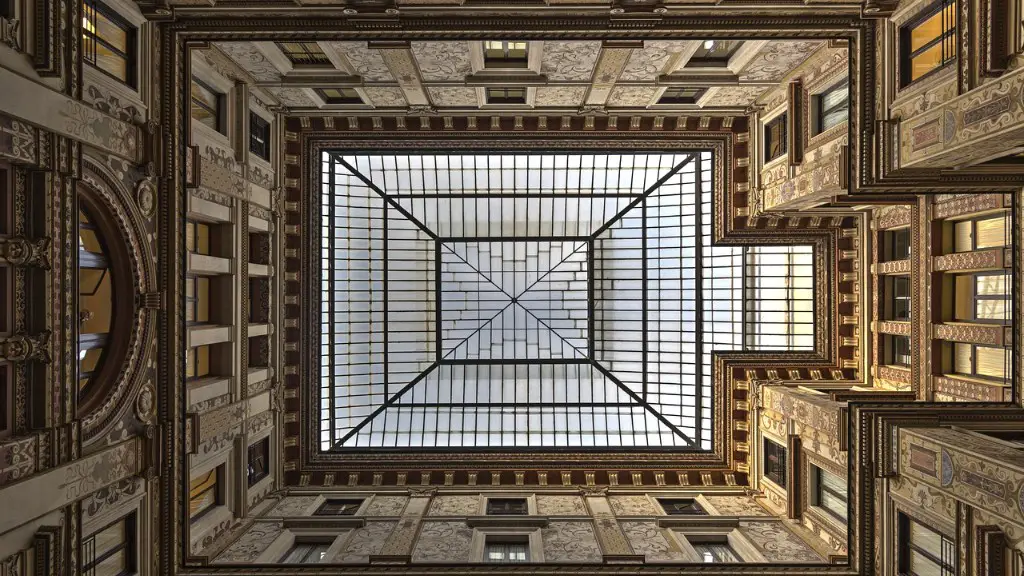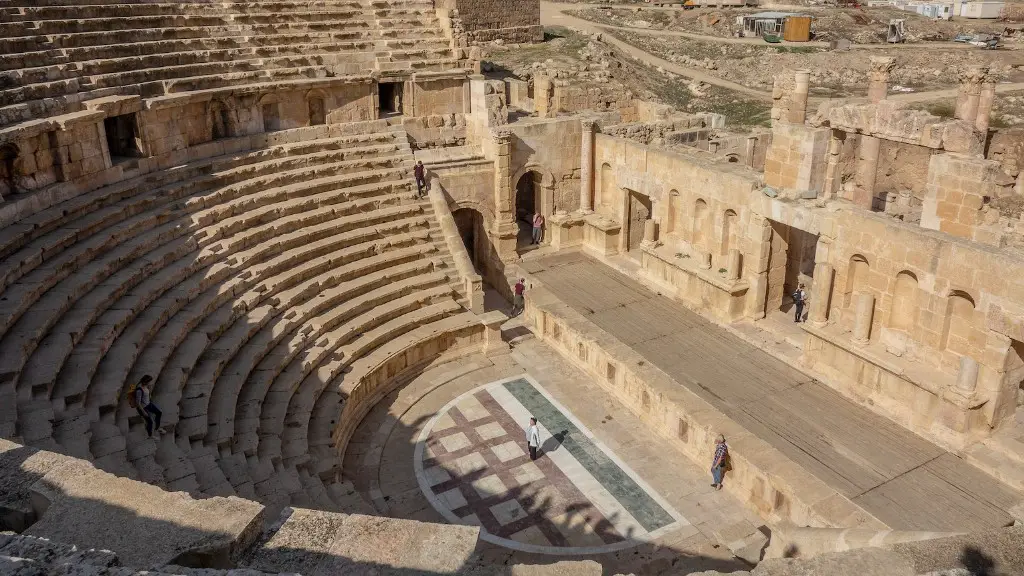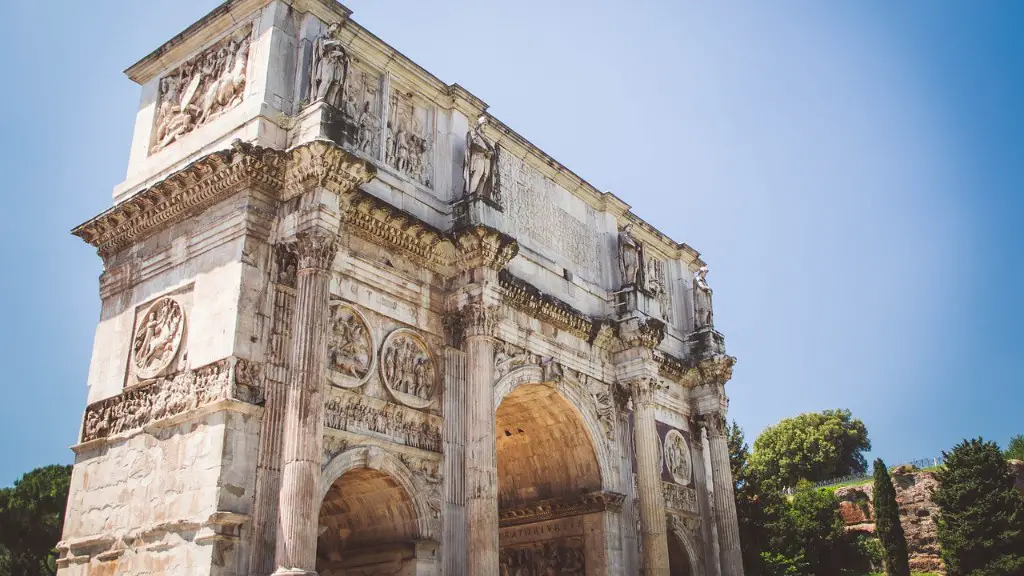The Colosseum, which is also called the Flavian Amphitheatre, is an iconic structure of the ancient Rome. Located in the city center at the foot of the Palatine Hill, it is the largest amphitheater ever built and was used as an entertainment venue of numerous gladiatorial battles, public spectacles, and dramas. With its elliptical shape and three-story façade built of travertine stone, the Colosseum remains a remarkable yet haunting symbol of the lost grandeur of the city and serves as an important reminder of the past.
Dating back over two thousand years, the Colosseum has come to represent the once powerful Roman Empire and its culture. Its construction was ordered by Vespasian and was completed in the eighth year of his reign in 80AD. Around 50,000 spectators could be seated within the enormous structure, which was built as an amphitheater with tiered vaults surrounding an elliptical stage – making it the largest such structure in the world at the time. However, the construction of such a grandiose structure was no small feat. Drawing on various sources of labor and engineering skills, a team of craftsmen, engineers, and architects worked diligently over an eight-year period to create the Colosseum.
The Colosseum was one of the most significant structures of its time, incorporating some of the most advanced technologies of its day. Upon its completion, it was decorated with expensive imported marbles and was completely surrounded by a dense network of passages, vaults and underground chambers. The marble floors of the Colosseum were decorated with figures of gods and animals, while the exterior featured arcades, buttresses and granite and metal statues. Even today the Colosseum retains much of its ancient grandeur, and is a must-see for those visiting Rome.
The Colosseum’s main purpose was to provide entertainment and distraction for the masses. It was used for gladiatorial games and combat between men and animals, as well as theatrical performances and other competitions. Although it was seen as a violent and bloodthirsty form of entertainment, it was highly popular and became an integral part of Roman society. In addition to hosting thousands of people, the Colosseum also served as a symbol of the emperor’s power and wealth, and was a place of religious ceremonies and sacrifices.
Despite its violent history, the Colosseum is now a symbol of the heart and soul of Rome. A UNESCO world heritage site, it is largely intact, and is still a popular tourist destination. To this day, the Colosseum stands as a reminder of the grandeur and elegance of the ancient Roman Empire and its wonderful culture.
Religious Significance of the Colosseum
The Colosseum was not only a place for entertainment, but for religious activity as well. Built nearby the Roman Forum and dedicated by Titus under the aegis of Ceres, the Colosseum was seen as the temple to the Roman gods, a place of sacrifice, and the setting for reenactment of the myths of classical literature. Gladiatorial games in particular held religious significance, being a source of entertainment, but also a sacrifice to the gods. Though the games had a brutal side to them, the Colosseum was more than just a site for battles; it was a spiritual home as well as a center of Roman culture.
The Colosseum was believed to bring together people of all classes – a place of social unity. This was not only due to the gatherings that the Colosseum held but also because it was a symbol of wealth, strength and power. It was a structural symbol of Rome’s greatness and its ability to stand the test of time.
As such, the Colosseum has become a powerful symbol for many throughout the centuries. Even in modern times the structure is the focus of countless debates, art projects, and political statements.
An example of this is the annual Good Friday procession, when the Pope leads a procession around the perimeter of the Colosseum. This is done in a symbolic gesture of remembrance to those who died during the gladiatorial contests of old.
The Decline of the Colosseum
The decline of the Colosseum began with the fall of the Roman Empire. Following its abandonment, the Colosseum was left to the mercy of the elements, and the ravages of time. By the middle-ages, it had become a quarry for stone and a cemetery for Christians.
The Colosseum also suffered from looting, as it was used as a source of building materials, such as iron clamps and lead for roofs. The stones were forcibly extracted from the pillars, walls, and vaults, and these gradually deteriorated over time. As a result, the once-majestic structure eventually became an overgrown ruin.
Despite its decline, the Colosseum has withstood centuries of wear and tear and remains an iconic structure. Throughout its many years of decline, it has still served as a symbol of the might of the Roman Empire, and its timelessness, evoking powerful emotions in people who visit it.
The Colosseum today continues to be an important tourist attraction. From the days of Nero and Titus, tours of the Colosseum have been organized, and it even hosted the opening ceremonies of the 1960 Olympic Games. Thousands of tourists file through the arena each day, making it one of the most visited sites in Rome.
Public Restorations
Since its decline, the Colosseum has received restoration from both the Italian government and various private donors. In the nineteenth century, Pope Pius VII carried out a limited restoration project, securing columns and arches that had become detached, and providing drainage for the underground water that had seeped in.
In the twenty-first century, a major restoration project was completed on the Colosseum, funded by the World Monument Fund, which worked to stabilize the structure, protect it from further damage, and add amenities for the tourists. A state-of-the-art metal and glass canopy was installed to protect the ruin from the elements, and a new lighting system was set up to highlight the structure’s historical and aesthetic features.
The Colosseum is also currently undergoing a multi-year campaign to conserve, protect and enhance the structure, funded by the Italian Ministry of Culture and Tourism. Through this project, various components of the structure have been restored and maintained, and new amenities have been put in place, such as staircases, ramps, and elevators, to ease accessibility and reduce visitor congestion.
Environmental Concerns
In addition to its age and the toll taken by the elements, the Colosseum continues to be threatened by pollution and acidic rain, which has led to concerns over its fate. In an effort to protect the structure, soundproof fences and anti-pollution screens have been built around it, as well as greenhouses to create a buffer zone between the Colosseum and the city.
In addition, students and professionals in the fields of engineering, architecture, materials science and chemistry are regularly called upon to work on restoring and preserving the Colosseum, using innovative technologies to combat the gradual destruction of the structure.
In recent years, the Colosseum has also benefited from the installation of numerous sensors, cameras, and monitoring systems, which have enabled the Italian government to maintain an innovative network for the constant assessment and protection of the site.
Conclusion
From its early days as a place for religious activity and entertainment for the masses, to its current status as an iconic symbol of an ancient civilization, the Colosseum has withstood immense changes in world history. It is an enduring reminder of the power and grandeur of the Roman Empire, and its timelessness is celebrated each day by thousands of people. Its constant maintenance is a testament to the importance and significance of this incredible structure, which has managed to stand the test of time.
